The Ultimate Guide to the Mentawais
The Mentawai Islands are considered to be some of the most beautiful islands on the planet. With great weather, warm water, perfect waves, it’s no wonder why these islands are surfers’ dream destination. Whether you are a first timer or veteran, we’ve created a guide with our top tips on how to have best possible time on your surf trip to the Mentawai Islands.
History
Off the western coast of the Indonesian island of Sumatra, the Mentawai Islands are known for ideal surf conditions and a storied past. The Mentawais are comprised of about seventy islands, some of which are uninhabited and remain essentially untouched. The breaks around these islands were discovered by surfers in the late 1980’s and 90’s. Previous discoveries of waves in Bali, G-Land, Nias and other places in Indonesia sparked curiosity and adventure in surfers in pursuit of perfect empty waves. A few surfers are credited with finding waves in the Mentawai Islands, including Lance Knight (link) and Martin Daly (link). The first photos of the surf breaks in the area were leaked after a trip in 1992 aboard the Indies Trader, with professional surfers Ross Clarke-Jones, Tom Carroll and Martin Potter (Link). At that point the cat was out of the bag and the Mentawais were on the radar of surfers.
Boat Charters vs Land Camp
Mentawais Surf Charters
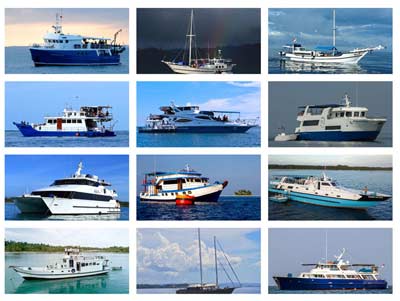
The travel industry in the Mentawais started exclusively with private surf charter boats. These boats are able to anchor around the various breaks, and go to the breaks which have the best wind and swell conditions. As of 2019, there are close to fifty different boats operating out of Padang Harbor, offering surf trips to the Mentawais. Boat styles range from local Indonesian to luxury yachts.
- Prices range from US$2000-$6000 per person for a trip
- Boat trips are 11-13 nights
- Boats depart from Padang
- Boats take 8-12 surfers
Mentawais Surf Resorts & Camps
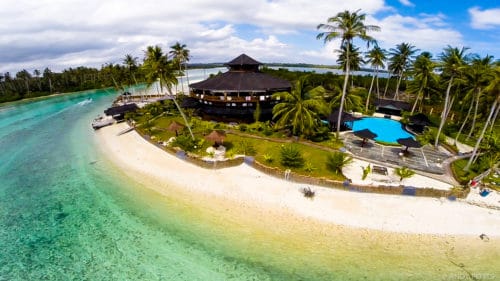
Starting in the past decade, a bunch of land camps have popped up in the Mentawais. They have been made possible by development of the islands, with cell towers, daily ferries, and an increased rate of tourism.
- Camps range from budget backpacker shacks to nicer resorts
- Most of the nicer camps are in more crowded areas, near the playgrounds area, Lance’s, Macaronis etc.
- Can go on a shorter trip than a boat trip, but if you are traveling a long time, we think its best to stay closer to 2 weeks. This also maximizes your swell window
- Quick access to a few waves, but no access to further out waves
Trip Preparation
Trip preparation is vital to having a successful and enjoyable experience as you embark from your home country to Indo and the Mentawais. Spend time researching all you travel options and read reviews from previous surfers to get an idea of what to expect.
Visa
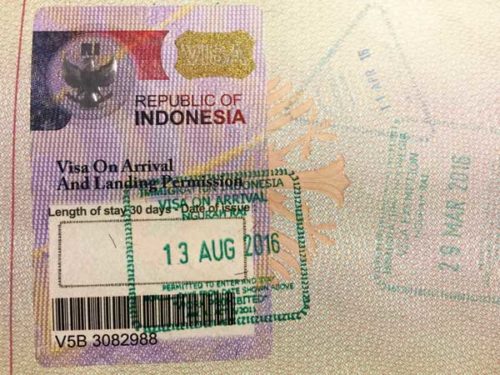
If you are planning on staying in Indo less than a month you can get a Visa On Arrival at the airport for $35 USD. If you want to stay longer, you will need to leave the country and reenter. Foreigners living in Indo usually will fly to Kuala Lumpur or Singapore for a day on the weekend then have a return flight to renew. Keep in mind that you must have at least 6 months left on your passport before it expires in order to get a visa (this is standard for all countries). Also be sure to check if your native passports country has any regulations with Indonesia to avoid any disappointing responses from immigration officers. For example, Israelis are not allowed to enter Indo.
Board Selection
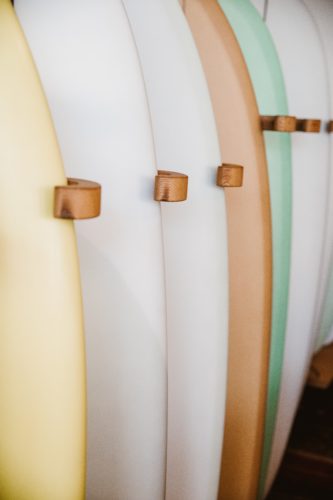
We recommend that you bring 3 board with you so that you’ll be prepared for a variety of conditions that you can experience in the Ments. Bring two of your standard short boards that you’re used to riding. We say two in case one of them breaks you don’t want to be stuck without a shortboard when conditions demand it. Bring one step up board for if it gets bigger. A rounded pin is good, a few extra inches which will let you paddle and move around when more water is moving around. A few inches makes a huge difference between not being able to get in to the wave, and getting in time that you are under the lip.
Board Packing
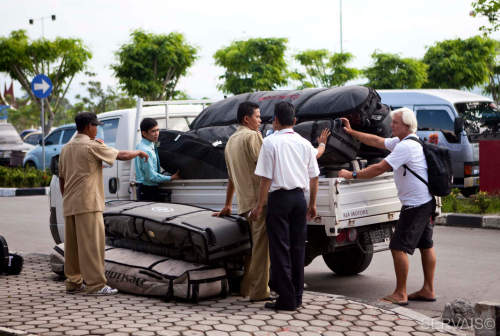
- Remove all wax, remove fins
- Get PVC Insulation from hardware store, conveniently in 6-8ft tubes, throw that on the rails and tape
- Wrap in bubble wrap – this will not add any weight but very much protect the board – better than bringing towels / wetsuits etc which you wont really need
- Board Bag with wheels is nice for airport transit, but not necessary, you can almost always get porters to help you for a few bucks, or throw the bag onto a cart
- Put a piece of duct tape on your board with your name, email, and home address in case it gets lost
Board Rental
Some resorts or boats may be able to provide you with surfboards. Check with them ahead of time to see. There is also a service called Awayco.com which claims to have rental boards in the Mentawais. You will need to see where this is, and if your resort or boat will be able to link up with them prior to your trip.
We don’t recommend renting boards. If you are traveling halfway around the world to surf the most perfect waves of your life, we think its best to spend the money to bring good quality boards that are perfect for you.
Surf Accessories / Your surf kit
- Leash Tethers – These are worth their weight in gold only when you don’t have them, bring 5
- FCS Keys – Again, expect these to go missing when you leave them out and about, so bring 4 or 5, that way you don’t have to stress. You can leave them on the tin boat, can leave them on the surf deck, one in your board bag and a few hidden in your room
- Leashes – Get good leashes – ¼” are best. Don’t get comp-lite. Last think you want is for your board to go into the reef. It’s a huge pain, especially if you don’t have booties, you will get cut up, and your board will also get destroyed. You want the confidence if you have to ditch your board that your leash wont snap
- Sun screen for Face – Headhunter or some super extreme sun screen. Don’t worry about how you look. You are near the equator and the sun is extremely hot. You will want the most cakey hardcore stuff you can.
- Sunscreen Body – you might want some more generic stuff, avoid banana boat which has oxybenzone and octinoxate which kills the reef – Link
- Surf Shirts / Rash Guards – After a lot of testing we prefer tee shirts, they may get sun damaged but they seem to rash less than rash guards. Keep in mind you will be paddling, surfing, chafing etc more than you will anytime in the year. Tee shirts seem to be the best for this
• If you suffer from intense rib issues, consider a wetsuit vest or something specific for “kook ribs” - Vaseline / Rash Cream – Headhunter makes rash cream use it preventively in arm pits, nipples etc if you start getting chafed. Treat it like a marathon runner – last thing you want is to end up with a rash that turns into an infection.
- Small day bag – to pack all your surf stuff, easy pop into the tin boat, dissuade others from taking it. The wax, sunscreen etc will become communal faster than you can think, and that’s all good, but sometimes you want a little more control over what goes communal.
- Fins – The harder the better, carbon fiber fins preferred. Obviously it would be best if all your boards are the same system, but if not, you probably want minimum 2 sets of each system, or enough to have two operational boards at any point and so you wont be pooched if you lose a fin.
- Wax – Tropical temperature rating. This will become communal very quickly, bring more than you think you need, (6 bars for 2 weeks) if you have extra leave them on the boat. Be sure to remove your cold water wax before you pack your boards
Clothing & Personal Items
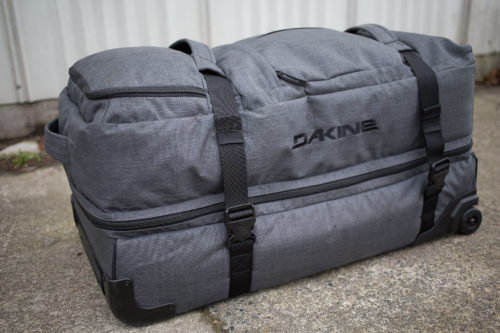
- A few pairs of trunks
- Nice comfortable shorts for when you come in and want to be dry.
- T-shirts you can use for surfing or hanging out
- Long sleeves, light color tee to keep the sun off and bugs in the evening
- Your only long pants, jacket and shoes should be your travel gear
- Sunglasses – polarized, must be sun protective, not cheap
- Hat – floppy and lifeguard hats are the best for preventing sunburn
- Toiletries – basic stuff, maybe some basic pills, advil, Tylenol, pepto
- Flip flops – You’ll be barefoot or in flops the whole time
- Most boats and resorts can do laundry – make sure you know if that is the case ahead of time, if that is true, you really don’t need much at all, they can wash your travel outfit and clothes prior to leaving
Bonus Packing
- Cliff Bars / specialty bars – nice to have a stash for yourself
- Supplements – Vitamin-C packs can really help for cramps / electrolytes. Take them every day to avoid cramps
- Sore muscle management – advil after a heavy hit, tiger balm for sore muscles. Try to stay ahead of any lingering injuries or pains. You will be putting your body through lots of stress, especially the first few days as you acclimate to surfing 5 hours a day in intense tropical sun
- Cigarettes – if you smoke these are going to go really quick, whatever you think you smoke, bring twice as many. On boats, cigs go quick and will also become communal real quick with friends, crew etc if you leave them out. Duty free lets you buy cartons for cheap in Indo.
- Recreational Drugs – You must have never seen the signs that say “DEATH TO DRUG SMUGGLERS” in Singapore, KL and Indo. Really, don’t.
- Cash – Bring cash for tipping the crew – its standard to tip 10% of your accommodation cost. Americans may feel this is standard or even tip more, Aussies have trouble wrapping their heads around this sometimes.
Travel
Surfers must get to Padang, Indonesia to meet with their transport to the islands. They can get there via Jakarta or Kuala Lumpur. Garuda Indonesia handles flights from Jakarta to Padang (a common route is to get to Jakarta via Singapore). Air Asia offers flights from Kuala Lumpur to Padang. Guests are able to take ferries from Padang, departing daily. There is both an overnight slow ferry, and the Fast Ferry, departing in the morning. The schedule can be found online, to popular hubs in the islands – Tua Pejat, Sikikap, and Siberut. (Link)
Route 1 – Singapore, Jakarta, Padang
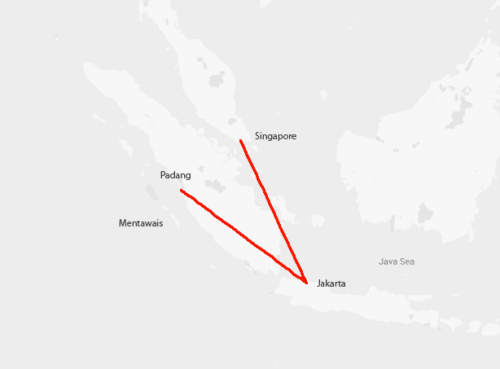
• Jakarta to Padang will be on Garuda Indonesia
• Your Singapore to Jakarta can be either on Singapore or on Garuda, their or advantages to either
a. Pros
• Your board will be checked through Singapore to Jakarta if you are on Singapore
• You fly on Singapore Airlines which is one of the best airlines
• There is a direct flight from LAX and SFO to Singapore (premium economy + business + first) this is a great plane, great service
• You stay in the Singapore airport on your layover (no need to exit and re-customs)
• Customs in Jakarta is less of a hassle, more straightforward than padang
b. Cons
• You have an extra flight compared to going through KL (if you look at a map you are going slightly out of the way to get to Padang)
• Jakarta you will have to transit from Arrivals to domestic check in, on a different level – it’s a huge terminal, lots of walking, not good for last minute, don’t dilly dally if you have a tight connection
b. Tips
• If you have a long layover in Singapore, get a transit hotel room. They have a number of transit hotels. Rent a private room ($75+) for 6 hour time chunk. This will at least allow you to get horizontal for a bit, take a shower, change your clothes so you can start your next day fresh. The long part is over and you will have felt like you’ve been flying for 17 hours.
• In Jakarta you will need to collect your board bag, clear customs, then re-check it back to the domestic terminal
• There will be porters offering to help you, if you feel like paying one of them $5 -$10 (indo 100,000 rupiah) feel free, they will carry your board for you. Some of the higher ups will even cut the line and rush you through customs. They can be aggressive, if you don’t want to tip or don’t have money, make sure you tell them no from the start. If someone helps you, feel free to tell them $5 from the start so there isn’t any bargaining after the fact
• When you arrive in Padang, the same will happen with porters. Just know what you are getting into, be friendly and let them know if you don’t want their help, or let them know or ask how much ahead of time if you do
• Generally speaking, your surf resort or charter will greet you outside of customs, make sure to hold onto whatever forms they give you as you leave. Sometimes they might try to ask for a fee as you come into the country, this isn’t needed, make sure you see what your group is doing, if they are being charged
Route 2 – Kuala Lumpur to Padang (Fly to KL via Narita or other major airports)
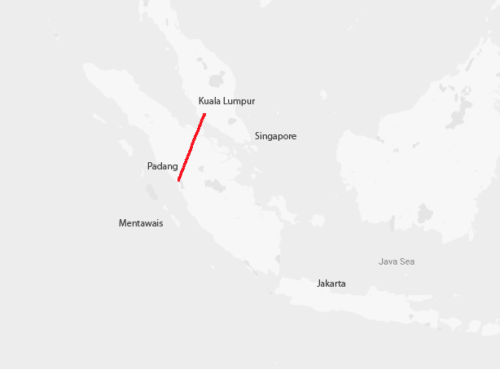
a. Pros
• You will have a longer overnight in KL, where you can exit the airport and stay at the attached transit hotel. You actually leave the “ariport’ but can walk to the hotel very close. Nice rooms and privacy, can take a taxi into town if you feel like it
• You will get on Air Asia in the morning and fly directly to Padang – very quick flight (this is quicker than having to fly to Jakarta then Padang)
• Very cheap
b. Cons
• Air Asia is an basic economy airline – nothing is included – meals drinks etc
b. Tips
• Make sure you pay ahead of time for an upgraded seat, as well as for your board bags – you will save tons of money pre-booking the sporting equipment
• You’ll clear customs in Padang, the customs guys can be rude or ask for fees that don’t exist – be aware
• KL is a huge huge airport – make sure you have plenty of time when you check in, Air asia is very much a self service airline, leave time in case you literally have to walk a mile.
Once you arrive in Padang
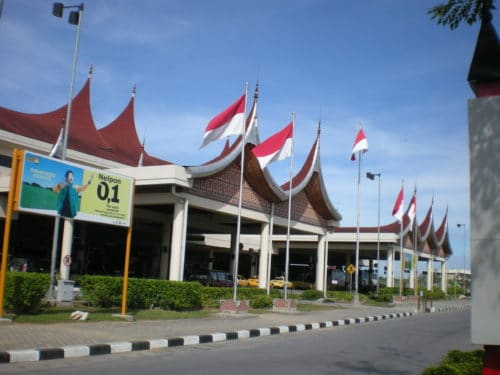
If you are on a surf charter, you’ll get in a van, be greeted by staff and taken to your boat. All the travel headache are behind you. You’ll get to the boat and get settled in, waiting around for the rest of the group. Its common to wait in Padang all afternoon as your group fills in. Since everyone is waiting the earlier the flight into Padang the better. You don’t want to be the guy arriving at 5pm. About a 45-minute drive from the airport to the harbor. You’ll do the crossing that night to the Islands, its an all night thing – if you are prone to sea-sickness this will be the night that gets you, can be rock and rolling as you cross. Don’t worry most of the next nights you’ll be sleeping in calm anchorages. Next thing you know you’ll wake up in the Ments, and be surfing before lunch.
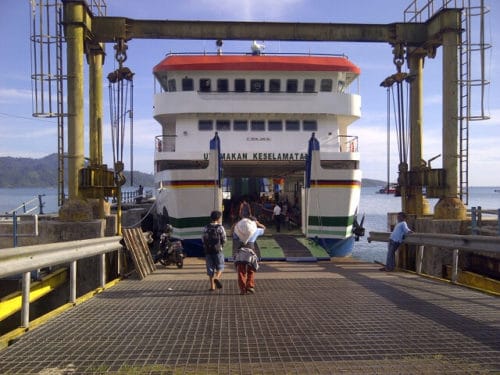
If you don’t have a surf charter one of your options is to take the slow ferry. The trip on the ferries takes around 10 to 12 hours, depending on sea conditions. Ambu Ambu & Gambolo are the two ferries that leave in the evening from Bungus Harbor. You can check their schedules here. If you didn’t buy a SIM card at the airport you can buy one at a shop in Padang so that you can have communication at select locations in the Mentawais and Padang. From Padang you can take a taxi to the harbor which will cost around 300,000 Rupiah ($25 USD). As these boats are used by locals everyday, they can get very crowded so we recommend getting an upgraded seat to sit more comfortably with your boards. Options include air-conditioned VIP seats (123,000Rp), more basic economy seats (92,000Rp) and wooden berths you can lie down on (50,000Rp)
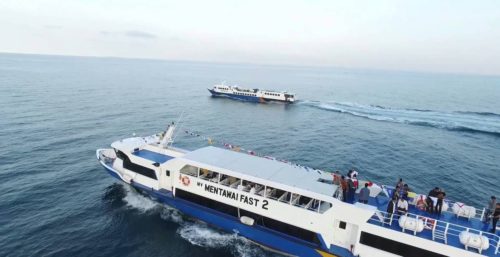
The more comfortable option is to spend the first night in Padang and take the fast ferry in the morning. Mercure Hotel Padang is the most recommended because it is new with a pool and Bintangs. It averages about $90 USD per night. There are plenty of options to chose from in Padang, just be sure to read reviews before you book. The Bat and Arrow costs around $18 USD a night and is close to the harbor has decent rooms and a bar. In the early morning you’ll take a taxi to the harbor and catch the ferry. Check the ferry schedule and make sure you have made arrangements with your surf resort or camp prior to booking so they know when you’ll be arriving. Prices for the fast ferry are as follows:
• One way from 300k rupiah ($20)
• 230.000Rp (around $17) SURFBAGS BETWEEN 10KG-15KG
• 460.000Rp (around $33) SURFBAGS BETWEEN 15KG-25KG
• 690.000Rp (around $50) SURFBAGS OVER 25KG
Top 10 Surf Tips
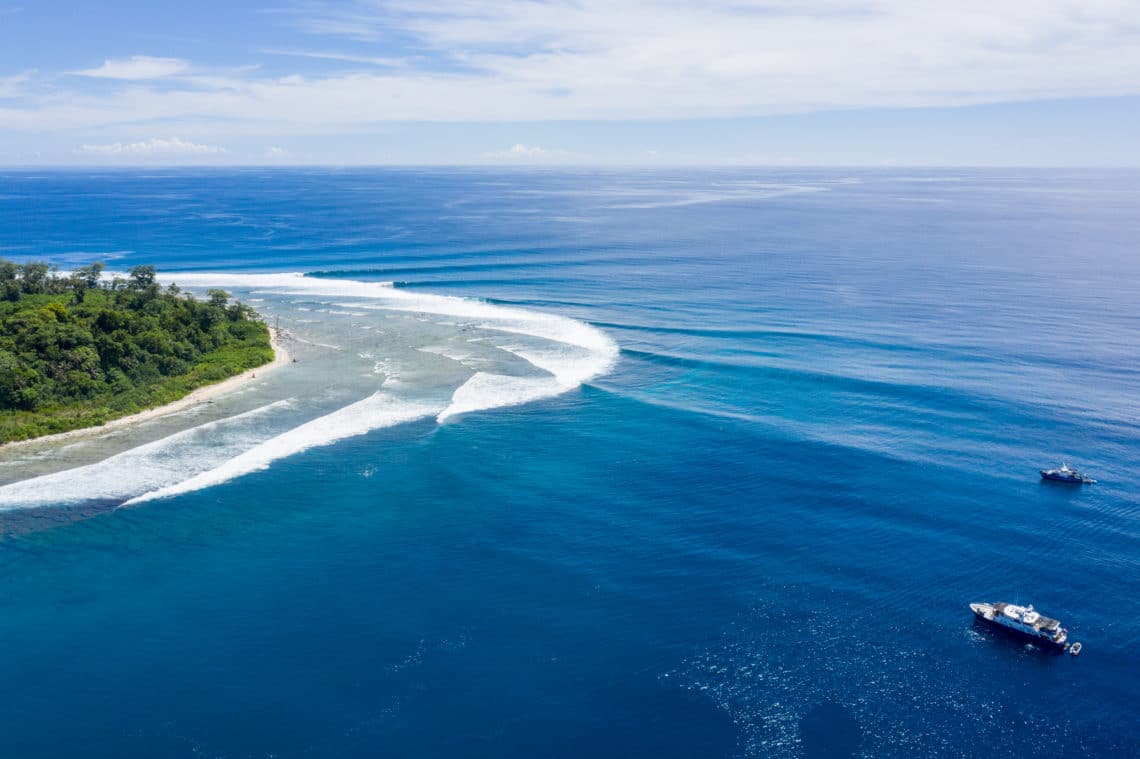
- Use your eyes – check out breaks for a bit, either from the tin boat or the shoulder
- Look for the reef, really dry/shallow sections – don’t throw yourself into un-makeable waves with dry reef waiting for you. You can usually find deeper water take off spots where even if you fall its okay, you won’t hit bottom.
- Shoulder hop if you are in doubt
- You will find there are dedicated take off zones though where its actually easier to get into the wave than if you are paddling on the shoulder
- Extra paddle or two – Waves in the Ments allow an extra couple paddles to get you into them, they don’t break out of the deepest of deeps like Hawaii, they kind of glide. If you are struggling to get waves, take a couple extra paddles to really push into the wave and paddle hard (duh), but this makes getting up easier.
- High Line
- The waves really allow for that high line to take you down the line
- Aim the board up and trim toward the top of the wave
- Keep your board in the top 1/3 of the wave if you are racing a section, you’ll be surprised how much ground you can cover keeping it high and tight.
- This also allows you to finally drop down and make it around a section if you have to.
- Watch your nose on the drop
- On critical drops, keep your eye on the nose of your board
- This stops you from looking to far down the line and forgetting to stick the drop
- Channel your inner Kelly slater and slow down time as you watch that nose glide vertically down, being sure to not pearl
- Don’t be a barrel dodger
- Pull in, sometimes the best is grabbing that rail and forcing the barrel, keeping it high and tight
- You won’t get barreled on the bottom of the wave like in some sand bottom waves
- Barrels are almond shaped, they favor the high line
- Leave the airs and suicide pull ins for the final days – No need to get hurt on day 1 or day 2
- The best buy out is the guy having the most fun
- Stop being competitive
- Enjoy yourself
- Realize that other people are having the time of their life too
- Enjoy the warm water and beautiful islands
- If you think you are tired and only want one more, consider getting two or three more, push hard you are in paradise, especially on the final day
- Surf Etiquette (things are different than your local break)
- Don’t back paddle people
- Take turns, generally there is a number or lineup of people 1-5 kind of taking turns
- Don’t make others miss good waves by sitting too deep and dropping into unmakeable ones
- If you are in pole position and don’t want a wave, make sure you tell everyone else loud and clear so they have time to get it
- Occasionally announce the order with your bros
- Hands up means, “I’m not taking this one”
- Communicate and be happy and allow the true experience of surfing to come out – where the good wave finds you in that perfect spot, and you don’t have to deal with that crowd factor
Wiping Out
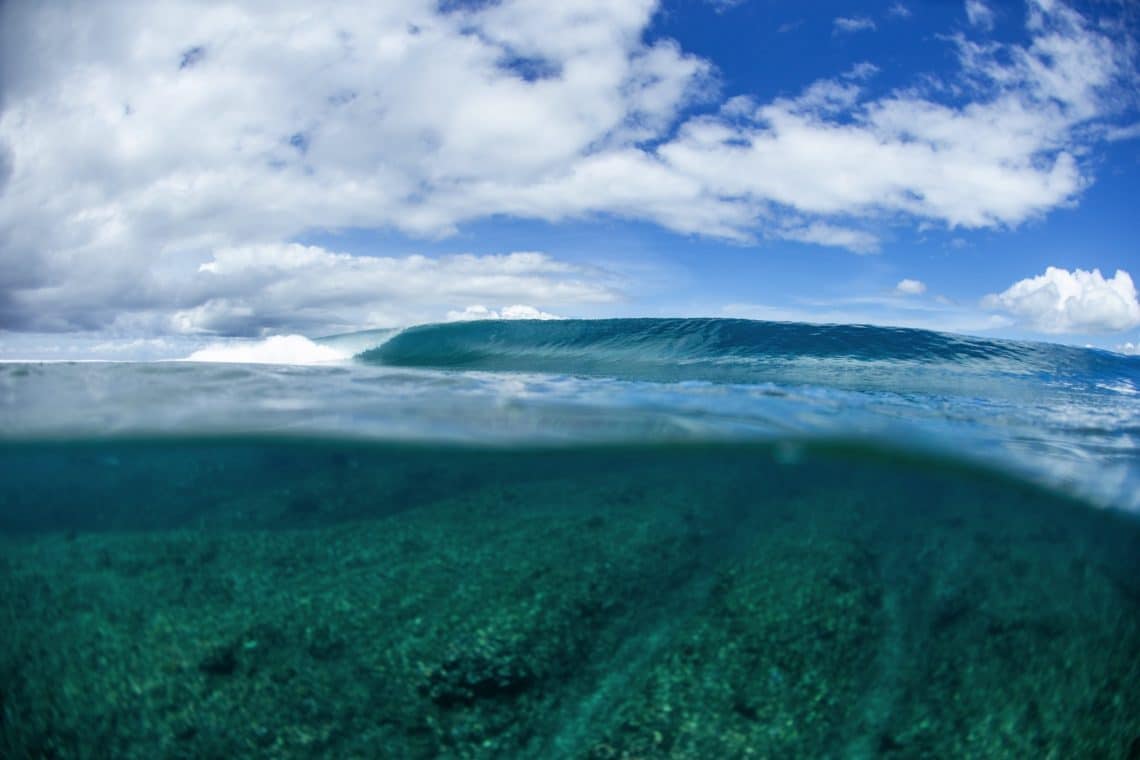
Its inevitable and the reef is sharp
- As with most hollow tropical reef breaks… the reef is sharp and water is very shallow at different spots
- Cover your head
- Rule number one of any wipe out, cover your head. This protects you from hard impact with the reef as well as from your board or someone else’s board which might be flying around under water with you
- Keep at least one arm over your head bracing until you are up and can see your board.
- Don’t panic
- The water is warm and nice, you can even open your eyes and see what’s happening, see which way is up
- Take the Brian Keaulana tip and sing yourself a nice song – link
- Don’t flail your feet around, keep them nice and steady, how many little reef cuts can be avoided by not kicking your feet
- If you do hit bottom, chances are you have a couple minor scrapes
• Make sure you do the typical “lime rub” on the boat (it stings)
• Do the 2019 version of lime rub and use hibeclens to wash out any coral remnants
• Deeper cuts you may want Betadine
• Anything that happens – your captain has probably seen worse, just ask their advice, keep an eye on it
Cuts and Injuries
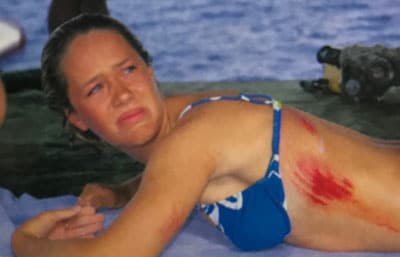
If you get some open cuts or rashes it is important you keep an eye on it, staph infections are common
- Keep dry – When you are out of the water, wash them off with fresh water and wear dry clothes, allowing plenty of air when you can.
- Bandages – You may want some band aids or bandages for dressing if you are sleeping at night, but keep things flowing in air during the day when you can.
- Medicated powder can be really good to keep things dried out / Antiseptic First Aid Powder or even Gold bond / baby powder
- Antibiotics – Have some antibiotics prescribed to you ahead of time in case things start turning infected – again ask your captain for advice if you are in doubt but infections are going to look like dark areas around the cut, and if you feel pain in your groin or armpits then you should really ask for medical attention (means the infection is spreading)
- Medi-vac insurance – doesn’t matter if your resort or boat demands it or not – pay what you need to have medi-vac insurance. If you get a fin to the head or gnarly staph infection you want to be able to get to Singapore ASAP, don’t cut corners with this. DAN offers good worldwide coverage, also protects you from trip cancellation etc
Surf Breaks
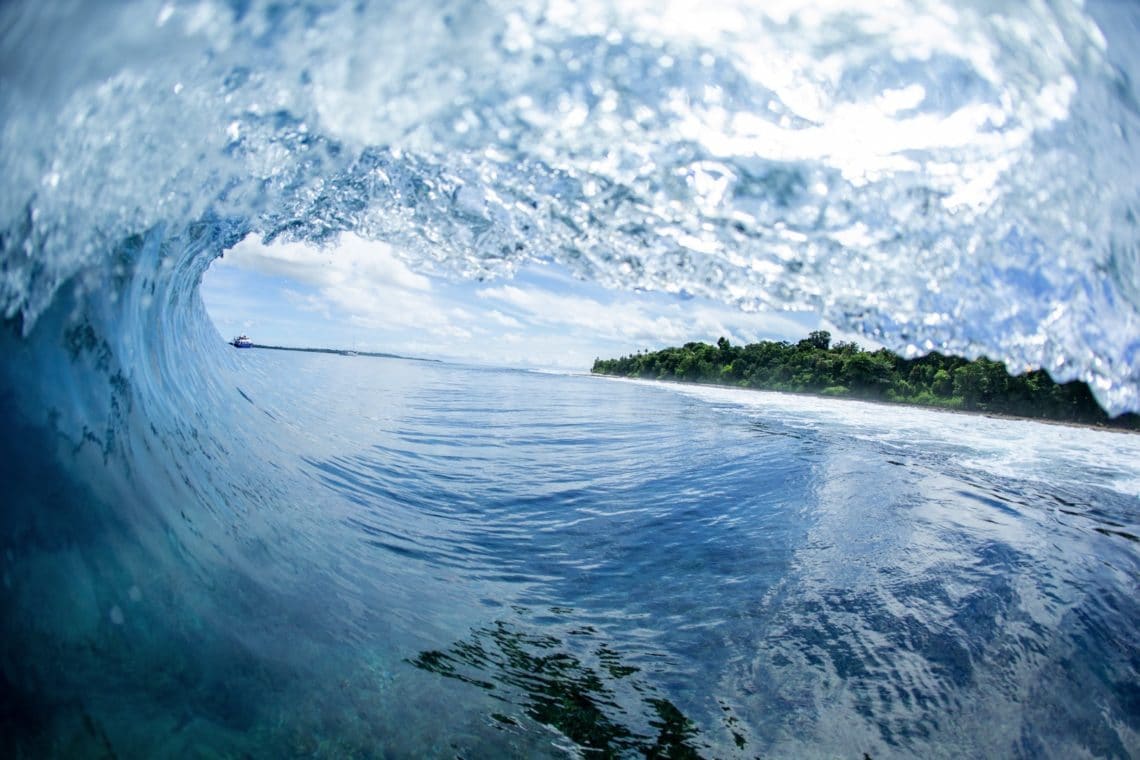
We’ll cover the most consistently visited (aka crowded) ones here, any good captain has places they will go to avoid the crowds.
Rifles
Rifles or Kandui Right is all about speed. With a westery wind, Rifles starts firing. Expect insanely long barreling waves with glassy walls that will leave you thinking what you’re seeing isn’t real. The take off area is intense and crowded so it can be intimidating for intermediate surfers. With a wave this perfect you have to expect big crowds every day.
Thunders
Thunders is named for the thundering noise the waves make on a big swell. Waves seem to look and feel in the water than from the boat. Thunders is one of the most consistent left in the Ments. Sets wrap from a few different directions so its vital to stay sharp and communicate with the rest of the guys out there to be alerted of big sets. Being caught inside at Thunders is something you definitely want to avoid. Injuries are actually pretty rare on the bigger days but beware when the swell drops below 4 ft., small days always seem to hammer you harder there’s no escaping the shallow reef. Also there’s decent cell signal here and a swell magnet, so plan on crowds.
Macaronis
Macaronis, more commonly referred to as “Macas” is one of the best lefts in the tropics. The wave looks more like a man made wave in a wave park than a natural reef formation. Macas is a very interesting wave, it punches back with so much energy as it wraps into the bay.
Lance’s Right (Hollow Trees)
This is a world class wave, but watch out for the surgeon’s table on the inside – it can creep up on you and you’ll be bloodied up if you wipe out at the wrong time. Wide sets can be long and easy to make but everything else is fast and almost perfect. Check out Martin Daly’s Surfline spot check presentation on Lances here.
Lance’s Lefts
Same area as Lance’s Right but can be less crowded and more enjoyable for goofy footers. Long lefts wrap down the point before hitting the final section, which is the main take-off spot. Nice hollow section after the take-off.
Free time on your boat or at the resort
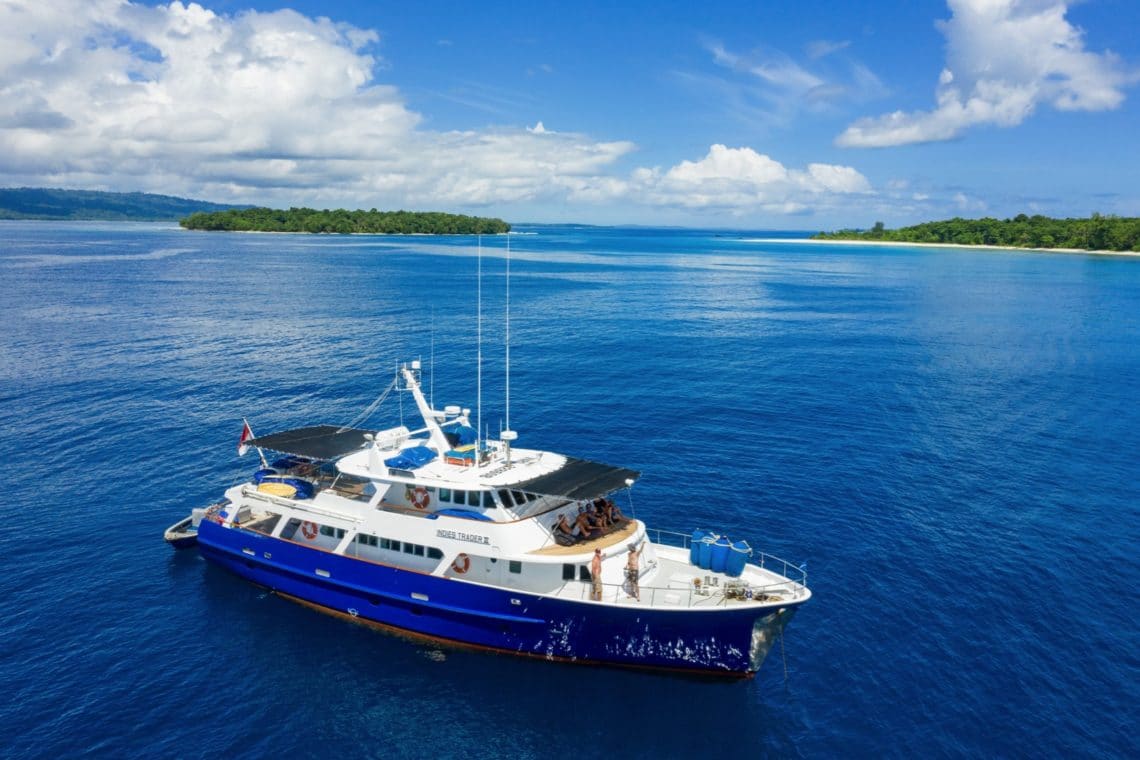
You can only surf so many hours in the day meaning you will be spending a good amount of time either on your charter boat or at a resort. You’ll be burning thousands of calories a day surfing, so eating good meals and getting enough sleep is essential. Read a book, watch surf movies, and chat with staff and crew. Indonesians are truly some of the nicest people on earth, make friends, crack jokes, and learn about the culture and lifestyle of people living on a different part of the globe than you. Drink lots of water, especially after flying and adjusting to the new time zone. You will probably be drinking lots of beer, as its usually included in your surf package, but don’t get so hammered every night that it effects your surfing.
Return to Civilization
Getting back to Padang
You will take an overnight ferry to Padang following the same route you took to get there, arriving very early in the morning the next day. Don’t book your flight out of Padang any earlier than 11am, it’s important to allow time for delays and transport to the airport. If you book a 8 AM flight there’s a good chance you’ll miss it. Also its good to note that, whether you fly out of KL or Singapore, you’ll have an overnight stay, so there isn’t a major rush to get out of Padang early. If you are coming back on a ferry, you’ll likely have a night in Padang, as the ferries get in late afternoon. Its better to give yourself the extra buffer time than risk missing a flight and getting stuck.
Depending on your future travel plans and home destination it is recommended to stay overnight in Kuala Lumpur or Singapore. Both are large, impressive cities with plenty of things to do and we suggest spending a few days exploring them if you have the time.
Overnight in Kuala Lumpur
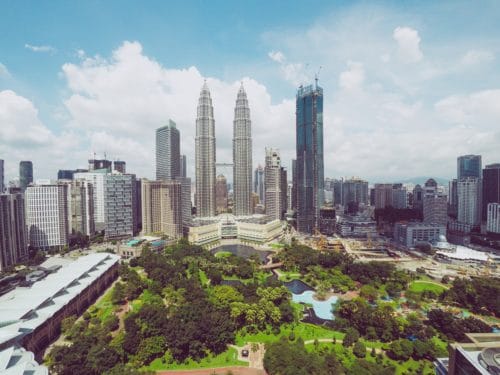
If you aren’t interested in doing much exploring of KL then it is best to stay in a transit hotel near the airport (KUL). There are dozens of options for that can fit anyone’s budget, you can view some hotel choices here. You may be able to get a late night flight from KL back to USA/ AUS but leave plenty of time. The KL airport is huge, you literally will have to walk sometimes a mile or two to get to the right place.
If you have 8+ hours before your flight or are going to stay overnight in KL, there is a convenient train called KLIA Ekspres that takes you directly from the airport to the city center in under 30 minutes. You can also use the GRAB app, which is the asia equivalent to Uber and will be cheaper than getting a taxi at the airport and you can choose a van to fit you boards. After dropping your bags at your hotel, go check out Batu Caves. These impressive caves are close to the city and cheap ($8 USD) to enter. Check out some of the highlights you will see exploring the caves here. Back in the city you will find KL to be a very clean and modern city. KL is a safe city and can be explored pretty easily on foot so go eat some Malay food and street markets. At night the Petronas Towers are quite a spectacle, with a water and light show that happens on some nights.
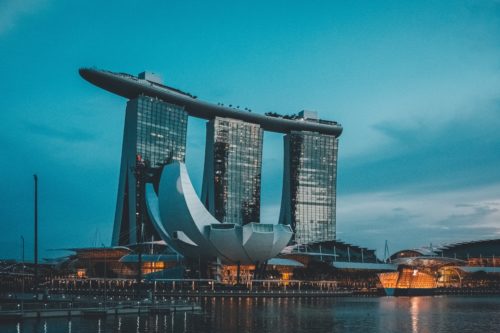
Overnight in Singapore
If I had to choose between flying through KL or Singapore, I would choose Singapore every time. Singapore is one of the most interesting and futuristic cities in the world and one can spend a week exploring the area. You will fly through Jakarta and then to Singapore and have an overnight in Singapore. While Singapore definitely is more of a impressive city than KL, it comes with a price. Expect to pay US/European prices for everything from food to lodging. If you are feeling like splurging on a hotel, Marina Bay Sands, is one of the most famous hotels on the planet and has the worlds biggest rooftop pool. For budget accommodation you can look for deals on Airbnb or hostels but expect to pay $50 a person per night. Be aware that Singapore has some of the strictest laws of any country (can’t chew gum in public, death penalty for drugs) so be on your best behavior. You can easily spend two full days exploring the Gardens by the Bay, a massive manmade garden and sustainability facility with Super Trees and Cloud Forests. Check out the top 10 things to do in Singapore here.
Flying Home
Enjoy your flight home, hopefully you are on business class and it can actually be relaxing. If you are in economy, a seat upgrade with extra legroom is definitely worth it for the long haul flights. Make sure to check seat availability before check in to make sure if you can snag a better seat. If you have a quick stop in Narita (United/ANA), go grab a sushi / sake and make sure you are back within the hour. This will also be your last chance for Duty Free, so load up on goodies on your way home. Don’t fall asleep on the ground, you have to be back at your seat within the hour.
Post Surf Trip Blues
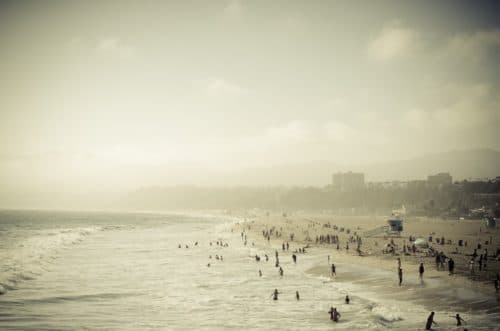
Yes, it’s a real thing. You’ve just been to one of the most heavenly places on Earth. You’ve just experienced a new side of surfing want to continue, but the waves at home will be constant let downs. You’ll want to chat about indo and boats and adventurous stuff, but not many people will really get where you just were or what you just experienced particularly if you had one of those life changer barrels. Edit photos and videos in hopes of convincing your friends to return with you someday. Keep in touch with your mates, start planning the next trip, relax about surfing the crowded waves back home, and know at any time of year there is probably another perfect wave going unridden in that Indian Ocean as we speak.